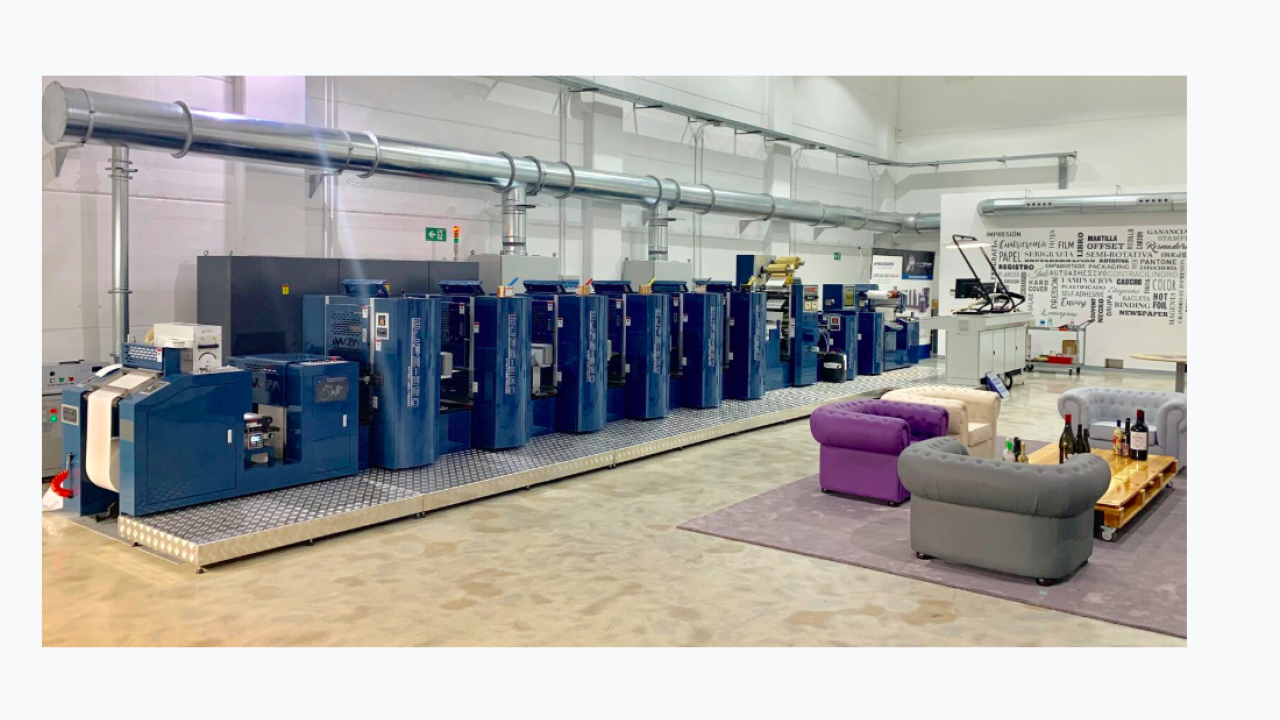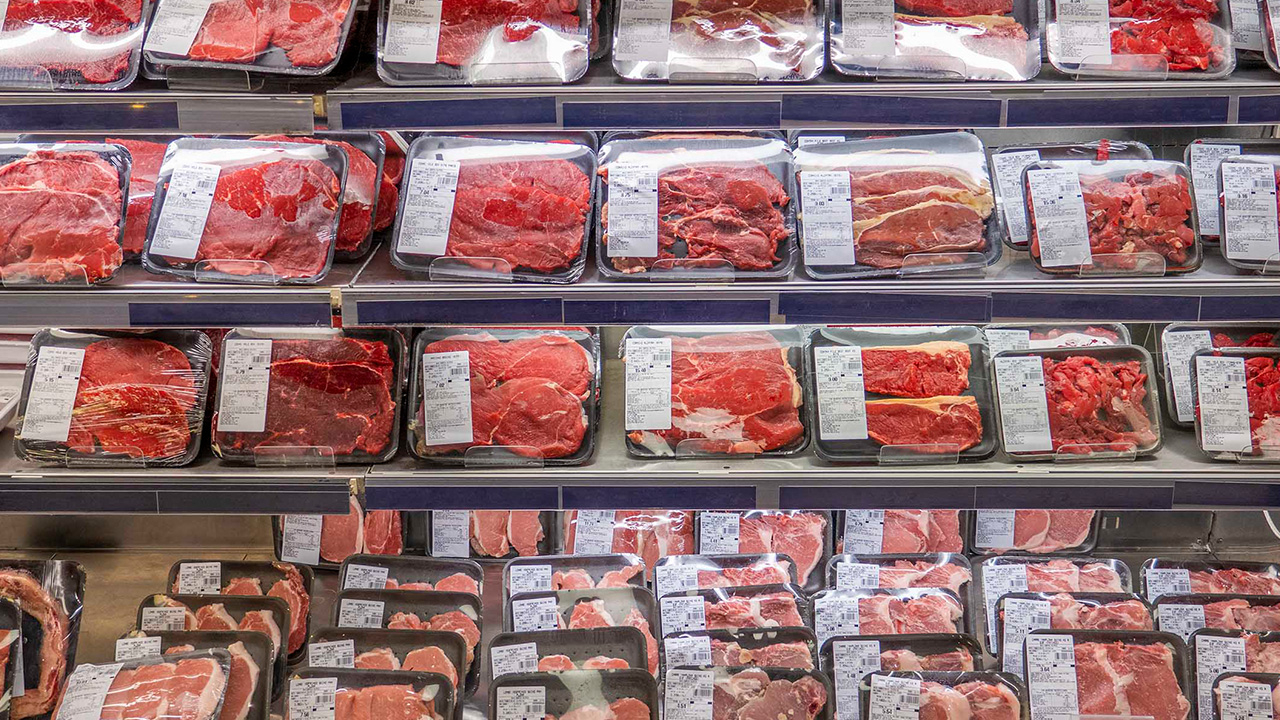Wanjie Europe rides semi-rotary offset wave

Madrid, Spain-based Wanjie Europe has been created by Grupo Impryma in partnership with Chinese manufacturer Hebei Wanjie Machinery. This partnership has been forged to sell Wanjie’s series of WJPS semi-rotary offset press into the European market.
The founding business within the group is Impryma, specializing in high-tech products within the graphic arts industry. Established in the late 1970s, the business was refocused in the early 1980s after a change in management, meaning its current iteration has recently marked 35 years in operation.
The group includes Impryma Services, which provides maintenance and service assistance, a must for achieving the excellence in service and a bedrock upon which the group is built.
Via its businesses, the group represents a number of manufacturers at points up and down the label and flexible package printing supply chain: MPS printing press technology, Cartes finishing machines, Rhyguan converting equipment, Ashe slitter rewinders, Karlville converting equipment, Schobertechnologies IML die-cutting, Camis plate mounting systems, Ovit flexo cleaning machines, Grafikontrol inspection technology, UV Ray curing, Matho waste removal, Kelva web cleaning, Koenig & Bauer coding and marking systems, Swed/ Cut doctor blades, Flexcon self-adhesive materials and more.
Growing trend
The addition of Wanjie semi-rotary offset presses and the establishment of a dedicated European office are more recent developments. While Grupo Impryma has had previous exposure to offset printing technology, Wanjie Europe was founded in 2015 after group general manager Félix Prieto spotted a growing trend in the market.
He takes up the story: ‘Six years ago we noted that semi-rotary Chinese technology was starting to be present, however we didn’t give it too much thought until three machines entered into the Spanish market. What was happening?’
This led to Prieto undertaking research into the market, which revealed that long-standing perceptions of offset being an ‘exclusive’ printing process and of Chinese equipment being inferior to Western counterparts was no longer ringing true. Rather, many markets in Europe were becoming more receptive to such equipment.
This realization prompted Prieto to travel to China and meet with a number of press manufacturers to see their products and technology first-hand. The result of these was deep appreciation of Wanjie’s semi-rotary offset technology.
Prieto explains: ‘When I met with Paul [Hu, CEO and general manager at Hebei Wanjie Machinery], I was very impressed with his intentions, his ideas about the future and the company’s technology. Together, we were aware of the opportunities elsewhere in Europe. Our strong relationship has allowed us to establish Wanjie Europe and achieve success over the last few years.’
This has been further realized by Hebei Wanjie providing modified hardware that is sold into Europe. ‘Wanjie understands and accepts my need for perfection,’ says Prieto. ‘When I visited them in China, I made some suggestions and within a short amount of time, they had been made. I was very impressed and this highlighted to me the trust that we could place in each other.’
Wanjie WJPS semi-rotary offset presses are available in 350mm, 450mm, 560mm and 660mm web widths. They can print at speeds up to 180 prints a minute, and handle a wide verity of substrates, up to 350gsm.
Shaftless drive technology sees servo motors drive the cylinders directly to ensure a high speed and accurate running. The servo drives further allow independent operation of each printing unit via a touchscreen. The presses feature an electronic control system with a central processing unit controlling the servo motors via a DOS-based operating system resulting for accurate web transport and a secure operating environment.
To ensure accurate registration, each print unit moves automatically to a preprogrammed position in the machine by means of an individual motorized precision spindle and the printing cylinders move to zero point once the desired printing length is set at the main control panel. Fine tuning of the lateral and circumferential register can be done during start-up with the help of the integrated CCD video system. Full automatic register control is available as an option.
The ink train consists of 20 rollers with four ink form rollers and a combined water-ink form roller. An oscillating water roller in contact with the water-ink form roller ensures a fast ink-water balance, avoiding ghosting and building up of ink. Automated control of ink duct and water roller ensures constant ink water balance at different speeds. The ink train is designed to allow printing on both paper and film.
A central lubrication system automatically supplies oil to the all parts of the machine.
Other features include computer-controlled assisted plate mounting and removal, which means a 6-color plate change can be done in only six minutes; a pneumatic clutch pressure control system which ensures smooth and accurate running of the machine and reduces set-up waste - the two-way clutch allows pre-inking of the plate and blanket before going on impression; a segmented ink knife allows color corrections to be made during the press run; and a re-register system allows pre-printed reels to be run back through the machine for in-register over-printing.
Additional options include a flexo insert for the offset units, flexo coating unit, flatbed screen printing unit, cold foil stamping, semi-rotary and flatbed hot foil stamping. Such a flexible configuration should allow converters to manufacture the wide range of labels demanded in high value target markets such as wine labels and toiletry and cosmetics.
Prieto continues: ‘Around 50 percent of machines for the European market are totally new improvements, “under the hood”. This allows us to ensure the required CE compliance, as well as match the high expectations of European customers.’
That is not to say that there are not barriers to entry to overcome. ‘Some markets are not ready to adopt offset technology,’ notes Prieto. ‘The UK steadfastly remains a flexo market, for example, while other markets are not prepared for semi-rotary technology. And some are still not prepared to accept equipment from China.’
This may require promoting offset printing’s place in the production mix, such as its capability for short to medium runs and ability to print on a wide range of substrates, to improvements in the quality of Chinese manufactured hardware. It also requires a firm commitment to local support and service to ensure machine uptime and utilization.
Support network
From its offices in Madrid and Barcelona, Wanjie Europe offers after-sale support and spare parts for customers across the continent. This is noted by Prieto as integral to the success Wanjie Europe has reported in its short history.
‘Speedy and effective support is a must. As a result, Wanjie Europe cannot rely on China for service due to the time difference and distance. Our customers must have the response times they have come to expect and demand to make money and ensure the return on their investment.’
While the quality of the hardware installed has underpinned this – a customer in Iceland who installed its press in late 2017 is yet to need a visit from Wanjie Europe engineers – the company has also increased its holding of spare parts and invested in the staff to deliver service and support. This includes an offset instructor and specialist service personnel with a deep understanding of the offset process.
‘A lot of the problems we were hearing about were not to do with the hardware,’ explains Prieto. ‘Rather they were related to the skills available and the service being offered.’
Another dedicated member of staff is managing partners and distributors across Europe. This will spur Wanjie Europe on to achieve even greater success, according to Prieto.
‘With 16 machines currently in the field in three years, we must be doing something right. We’re not managing a select few markets, such as Turkey and Italy, but to have sold that number of machines in that time indicates that we made the right decision.’
Stay up to date
Subscribe to the free Label News newsletter and receive the latest content every week. We'll never share your email address.


